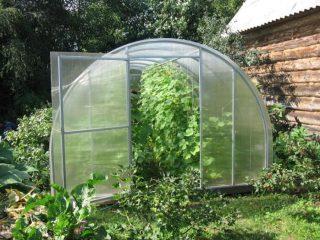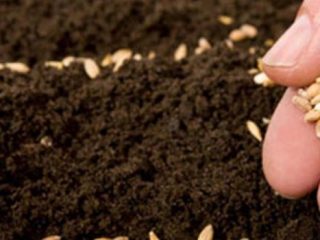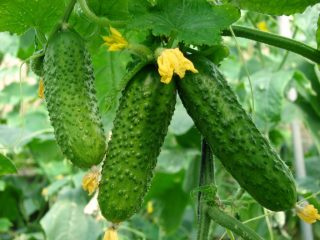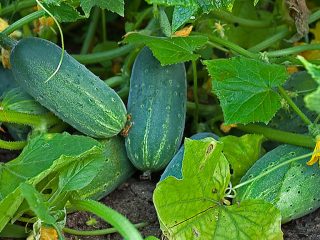Content
The Early Bird cucumber is a Russian hybrid, characterized by very high yield (up to 14 kg per square meter) and excellent taste. The fruits are universally used, suitable for pickling, pickling, and eaten fresh. They ripen 1.5 months after emergence.
Origin story
The Early Bird cucumber is a first generation hybrid (designated F1), bred by a team of breeders (V.A. Skachko, A.V. Borisov, K.Yu. Sayapina, O.N. Krylov and others) on the basis of the Manul seed company ( Mytishchi, Moscow region). The crop was included in the register of selection achievements in 2015.
Cucumber adapts well to different weather conditions, thanks to which it is approved for cultivation in most Russian regions:
- middle lane;
- Volga region;
- Chernozem region;
- southern regions;
- Northwest;
- Ural;
- Western and Eastern Siberia;
- Far East.
Description of cucumbers Early Bird
Cucumbers of this variety are indeterminate - the bushes grow throughout the season.The stem produces several branches, flowering type: female. Each node contains two or three small flowers of a typical yellow color. The leaves are small, rich green. The fruits are short, cylindrical, green in color. The surface is medium-tubercular, there are spines.
Early bird greens have excellent taste and juicy flesh. Suitable for fresh consumption and for various preparations (salting, pickling). Salad variety - can be used to prepare various vegetable snacks.
Characteristics of cucumbers Early bird
Early Bird cucumbers are cold-resistant, and it is recommended to grow them in greenhouses and under film covers, with the exception of the southern regions, where planting seeds or seedlings in open ground is allowed. The hybrid is resistant to many diseases and produces a stable harvest. This is precisely why many summer residents appreciated it.
Cucumber yield Early bird
The yield index of Early Bird cucumbers is very high. If grown in film greenhouses, then with an average planting density you can remove 14 kg from one square meter.
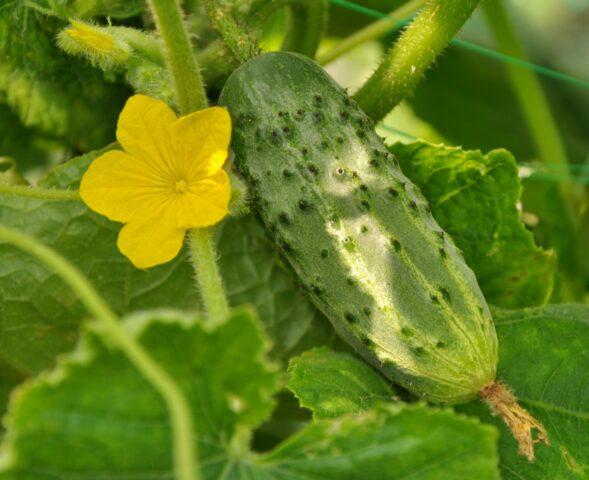
The first harvest can be harvested within a month after germination
According to the timing of ripening, the hybrid is classified as early ripening (early). The first Early Bird cucumbers are ready for consumption within 35–40 days after germination. Fruiting occurs smoothly, which makes harvesting easier. Two waves can be distinguished - the first abundant and the second residual (at this moment greens appear mainly on the side shoots).
Keeping quality is also good - you can keep it in the refrigerator for about two weeks.Since the harvest is plentiful, containers for preservation should be immediately prepared.
Resistance to diseases and pests
Early Bird, like many other hybrid cucumbers, has good resistance to a number of diseases:
- cucumber mosaic;
- cladosporiosis;
- powdery mildew;
- peronosporosis.
However, Early Bird cucumbers can suffer from late blight and fusarium. Diseases are often associated with improper pre-sowing preparation and excessive moisture. Therefore, the seeds should be treated on the eve of planting (if the manufacturer has not done so), and watering should not be abused.
In summer, crops can suffer from whiteflies, aphids and other pests. Therefore, Early Bird cucumber plantings should be inspected periodically. If necessary, treatment is carried out using folk remedies (infusion of garlic, onion peels, mustard powder, tobacco dust, wood ash). In extreme cases, Decis, Ephoria, Inta-Vir and other chemicals are used.
Advantages and disadvantages
Despite the fact that the Early Bird hybrid was bred several years ago, it has already managed to spread among summer residents. These cucumbers are valued for their excellent taste and good yield. The fruits are “convenient” sizes, suitable for preservation. Therefore, reviews of the crop are mostly positive; it is recommended for cultivation by more than 80% of gardeners.
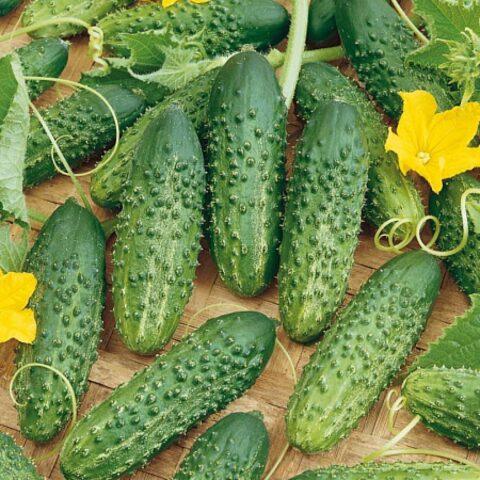
The average length of Early Bird fruits is 8–10 cm
Pros:
- excellent taste;
- high productivity;
- early ripening;
- friendly fruiting;
- cucumbers are not prone to overgrowth;
- self-pollinating hybrid;
- resistance to adverse weather conditions;
- can be grown in most Russian regions;
- attractive presentation;
- immunity to a number of diseases.
Minuses:
- susceptible to late blight and fusarium;
- may suffer from whiteflies, aphids;
- growing mainly under film or in a greenhouse;
- planting material has to be purchased every year, since it is a hybrid.
Features of cultivation
Early Bird cucumber seeds are planted mainly as seedlings. But thanks to the early ripening period, direct sowing in a greenhouse or under film is also possible in most regions. The timing depends on the method of cultivation and the climatic features of the area:
- Seeds for seedlings are sown in the first half of April.
- Early Bird cucumber seedlings are transferred to the greenhouse in mid-May, 25 days after germination.
- Sowing seeds in the greenhouse occurs in the first days of May.
- Sowing under film cover - mid or second half of May.
Sowing in open ground
Cucumber seeds can be planted under film or in a greenhouse. In this case, the soil and air should warm up to at least 15 degrees (at night not lower than 10 degrees). You can check this by burying the thermometer to a depth of 10 cm and holding it there for 10–15 minutes.
When preparing cucumber seeds for planting, they need to be kept for two hours in a fungicide solution, then placed overnight in a growth stimulator (Baikal, Agat, Epin or other product). To grow seedlings, use universal soil or garden soil with peat, compost and sand (2:1:1:1).
The algorithm for planting cucumber seeds Early Bird is as follows:
- Level the surface of the bed.
- Dig several holes 3 cm deep. Maintain an interval of 30–40 cm between them.
- Plant two seeds in each hole.
- Cover with film with holes.
- After a few days, remove the weak seedling, leaving one seedling in each hole.
- Feed with complex fertilizer, for example, Kemira.
- Water periodically to ensure the surface layer of soil always remains moderately moist.
Planting seedlings
Early Bird cucumber seedlings are grown in plastic or peat pots. It is possible to do this in a common container, but in this case you will need to pick after two true leaves appear.
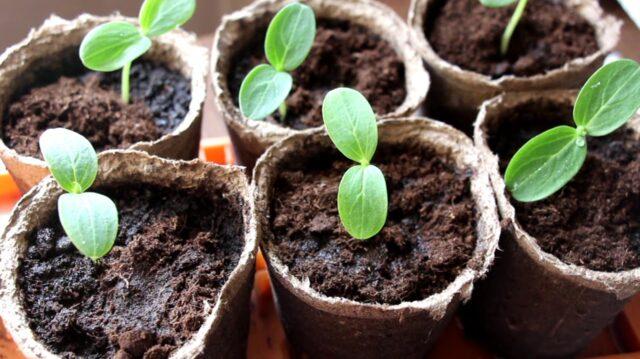
It is better to grow seedlings in separate cups
Technology for planting and caring for cucumber seedlings Early bird standard:
- Plant two grains at a depth of 3 cm.
- Water from a spray bottle.
- Cover with film.
- Place in a warm place (temperature 24–26 degrees).
- After emergence of shoots, remove the film.
- Feed the Early Bird cucumbers with Mortar, Kemira or other complex fertilizer.
- Start hardening two weeks before transplanting.
- Transfer to the greenhouse in mid-May (planting according to the 30*50 cm pattern).
Rules of care
Caring for cucumbers Early bird standard. To get a good harvest, you need to water the bushes, apply fertilizers, and shape the bushes. The main actions are:
- Watering is done at least twice a week, being careful not to flood the soil. The water must be settled. It should be poured only at the root, avoiding contact with the leaves, stems and flowers of cucumbers.
- Fertilizing is applied every 10 days (3-4 times over the entire period). It is advisable to alternate complex mineral fertilizers (dosage according to instructions) with organic matter (mullein 1:10, litter 1:20, infusion of cut grass).
- Early Bird cucumber bushes are not very tall, but they should be tied to a low trellis, directing the growth upward. All lower leaves are torn off.
- The formation of bushes is very simple: all shoots, including lateral ones, are left, since they will give the second wave of the harvest.
- Loosening of the soil is carried out after watering. Weeding is done periodically.
- As protection against pests and to maintain a normal microclimate, you need to lay a layer of mulch, as well as hill up the bushes, forming small earthen ridges.
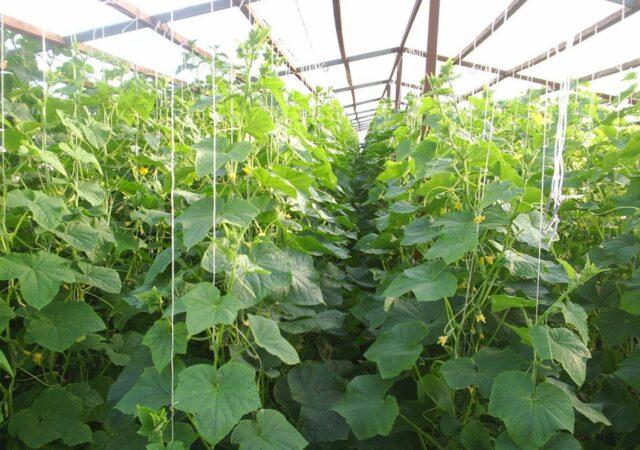
Bushes need to be tied to a trellis
Conclusion
Early Bird cucumber is an early ripening cucumber. Therefore, the crop can be grown not only by seedlings, but also by direct sowing in the ground. Fruiting is friendly, and productivity indicators are very high. Thanks to this, you will be able to get a lot of cucumbers even in cool summers.
Reviews from gardeners about cucumbers Early Bird

